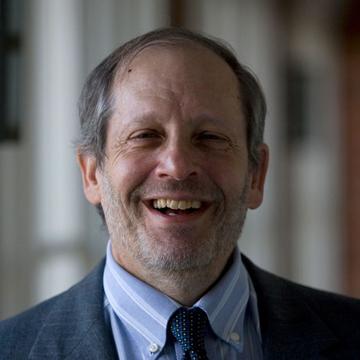Presidents, refoundings, and the ‘living Constitution’
The proper role of the chief executive has been a source of heated debate since the nation's founding
Excerpted from The Presidency: Facing a Constitutional Crossroads, edited by Barbara Perry and Michael Nelson, University of Virginia Press, 2021.
The fact that Americans crave extraordinary leadership—and think that at certain times in their history it existed—should not be taken for granted. This popular hagiography speaks to something that is unusual, if not exceptional, about American political culture. Madison’s poignant Helvidius essays drew on the experiences of ancient Greece and Rome that dramatically revealed the perils of celebrated leaders like Pericles and Caesar. Such extraordinary leaders traditionally were viewed as a problem in democracies; put simply, their dominant sway over the people threatened to rob citizens of their sovereignty. Indeed, “greatness” in leaders appears more appropriate for monarchy: Alexander, Peter, Catherine, Frederick—all were called great, but it is doubtful that any of them would do well in the New Hampshire primary. In fact, before the United States Constitution was written, the conventional wisdom was that strong executive power and democracy do not mix. Popular rule, properly understood, worked best in small polities, where the people could rule themselves. Or if the size of a country made “pure democracy” impractical, where they delegated authority to representatives who were kept on a very short leash. Legislatures—not executives—were thought to express the voice of the people.
 So it has been with all of America’s most revered statesmen. Washington, Jefferson, Jackson, Lincoln, and FDR all reveal that democratic leadership involves a vital connection between leader and led, and that presidential words and deeds can play an important role in shaping the quality and character of the citizenry. They can make the public more self-regarding and craven, or they can encourage it to be more energetic and public-spirited. The development of a mass media, providing for a direct link between the White House and the citizenry, has offered novel—and sometime perilous—opportunity for civic engagement. President Trump’s brief reign over American politics has made all too clear that a president may use the latest advances in social media to sow discord and bigotry. Yet as Felix Frankfurter once said of Franklin Roosevelt’s pioneering radio fireside chats, FDR had a remarkable ability to take the American people to school on the meaning of their deepest political beliefs.
So it has been with all of America’s most revered statesmen. Washington, Jefferson, Jackson, Lincoln, and FDR all reveal that democratic leadership involves a vital connection between leader and led, and that presidential words and deeds can play an important role in shaping the quality and character of the citizenry. They can make the public more self-regarding and craven, or they can encourage it to be more energetic and public-spirited. The development of a mass media, providing for a direct link between the White House and the citizenry, has offered novel—and sometime perilous—opportunity for civic engagement. President Trump’s brief reign over American politics has made all too clear that a president may use the latest advances in social media to sow discord and bigotry. Yet as Felix Frankfurter once said of Franklin Roosevelt’s pioneering radio fireside chats, FDR had a remarkable ability to take the American people to school on the meaning of their deepest political beliefs.
Playing the pivotal role in constructing a new political order, these presidents were revolutionary. By going back to—and redefining—first principles for their own time, they were conservative.
All of America’s most consequential leaders have displayed this talent to exploit what Theodore Roosevelt—an important inspiration for his younger cousin—dubbed the “bully pulpit.” They exerted leadership during the most dangerous crossroads of constitutional development. I refer to these junctures of popular constitutional politics as “refoundings” because they have required presidents to think constitutionally: to interpret the meaning of the Declaration of Independence, the Constitution, and the relationship between the two for their own time. Each of America’s most consequential presidents has infused the country’s founding principles with new meaning. Lincoln’s call for a joining of the principles of the Declaration and the Constitution in order to condemn slavery to extinction is the most famous. But all of America’s most important presidents since Washington (who provided extraordinary leadership in bringing the constitutional presidency to life)—Jefferson, Jackson, Lincoln, and Franklin D. Roosevelt—have justified regime change in terms of fundamental principles and constitutional norms. They have demonstrated that Jefferson’s elusive, exalted idea of a “living” Constitution was not an idle dream. They also have shown that the term “conservative revolutionary” is not an oxymoron. Playing the pivotal role in constructing a new political order, these presidents were revolutionary. By going back to—and redefining—first principles for their own time, they were conservative.
